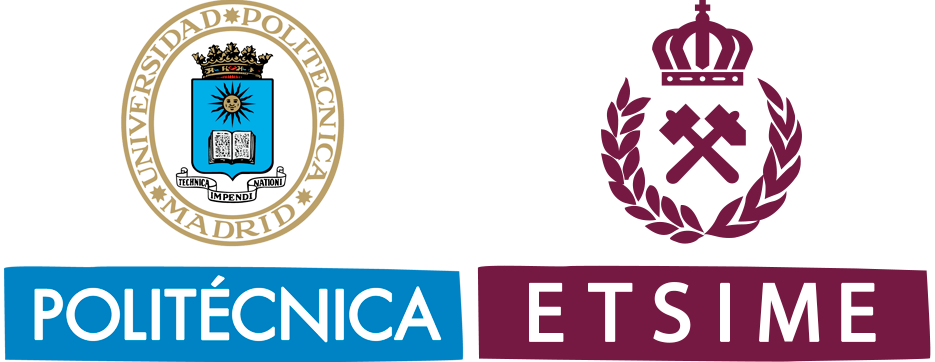The Biomolecular Stratigraphy Laboratory ( Laboratorio de Estratigrafía Biomolecular- LEB )of the Madrid School of Mines was born in 1991 as a result of an agreement signed between the Geological Survey of Spain, the main contractor, and the Madrid School of Mines, the subcontractor, in the framework of the Project "Paleoclimatological Revision of Climate Evolution in Western Mediterranean Region. Evaluation of Altered Scenarios (CE-FI2W-CT91-0075)".
This project was focused on the use of non-hydrothermal travertine deposits as palaeoclimatic indicators. A dating method was necessary to perform this study and we were helped by Dra. Veronika Meyer (now at the EMPA St. Gallen, Switzerland) to set up a dating laboratory for the use of the amino acid racemization method. Later LEB expanded, being devoted to date Quaternary deposits and to determin biomarkers in sediments for pure geochemical research and for palaeoenvironmental and palaeohydrogeological reconstructions.
Recently LEB has signed an agreement with the Spanish Geological Survey (Instituto Geológico y Minero de España) to became an Associated Unit, being our new task the determination of organic pollutants in soils and water .
LEB activity is focused on three different- but inter-connected- activity fields: Dating , Palaeoclimatology , Environment .
Due to the amino acid racemization dating method range, LEB dating work is focused on Quaternary deposits.
- Dating of marine raised deposits (terraces) on the Mediterranean coast of the Iberian Peninsula-marine mollusc and brachiopod shells.
- Dating of fluvial (tufa) and lacustrine(tufa and muds) deposits: terrestrial, freshwater and brackish-water mollusc and ostracod shells.
- Dating of eolian deposits of the Canary islands. Terrestrial mollusc shells.
- Dating of mammal remains from Spanish caves and open air sites. Teeth dentine.
- Dating of hominid remains from Spanish and Siria. Teeth dentine
- Dating of Archaeological sites from Northern Spain . Mollusc shells
- Speleothems
We performed different palaeoenvironmental studies in areas of the Iberian Peninsula
- 107 m deep borehole drilled in the Padul Peat Bog (Granada, SE Spain)
- 353 m thick section in the Guadix Baza Basin (Granada, SE Spain)
- 20 m deep borehole drilled in Doñana salt-marsh (SW Spain)
- 2 m deep record in the Roñanzas Peat Bog (Northern Spain)
- Mud volcanoes in the Gulf of Cadiz
- Archaeological sites
- Different oil source rocks
We determine organic pollutants in the natural environment mainly after anthropic action for different safety assessment purposes.
- In bottled potable water (UE regulations).
- In soils (UE regulations).
- In old mined (coal mines) areas. Dumps.
- For biorremediadion control
- Concerning the oil industry: gas stations-petrochemical plants-refineries.
- CO2 sequestration
We have established with different laboratories, including:
- Unidad Asociada al Instituto Geológico y Minero de España www.igme.es
- Laboratorio de Isótopos Estables. Estación Experimental El Zaidín, Granada, C.S.I.C. http://www.eez.csic.es/~isotopos/
- Departamento de Riesgos Geológicos y Laboratorio de U/Th del Instituto de Ciencias de la Tierra Jaume Almera, Barcelona, C.S.I.C http://www.ija.csic.es/index.php?option=com_gestio&view=MuestraPersonal&id=3&Itemid=&lang=es
- Grupo de Investigación de Geofísica del Instituto de Agrobiología y Productos Naturales, La Laguna, Tenerife, C.S.I.C. http://www.ipna.csic.es/departamentos/agro/
- Instituto Internacional de Investigaciones Prehistóricas, Santander http://grupos.unican.es/prehistoria/index.html
- Departamento de Prospección e Investigación Minera. E.T.S.I.Minas. Universidad de Oviedo http://www.uniovi.es/expromin/?mod=prospeccion#
- Departamento de Historia. Universidad de Oviedo http://www.uniovi.es/zope/departamentos/Historia/viewInfo
- Departamento Biología Animal de la Facultad de Biología de la Universidad de La Laguna http://www.ull.es/portal/viewcategory.aspx?code=80cb&lang=es&style=normal
- Laboratorio de Genética Forense y Genética de Poblaciones. Facultad de Medicina de la Universidad Complutense de Madrid http://www.ucm.es/info/genforen/index.htm
- Amino Acid Geochronology Laboratory of the Northern Arizona University, USA http://jan.ucc.nau.edu/~dsk5/AAGL/
- Department of Biology-Department of Archaeology de la Universidad de York, England http://www.neaar.co.uk/
- Department of Geological Sciences, University of Delaware http://www.geology.udel.edu/wehmiller/jwhome.html
- www.racemization.org


